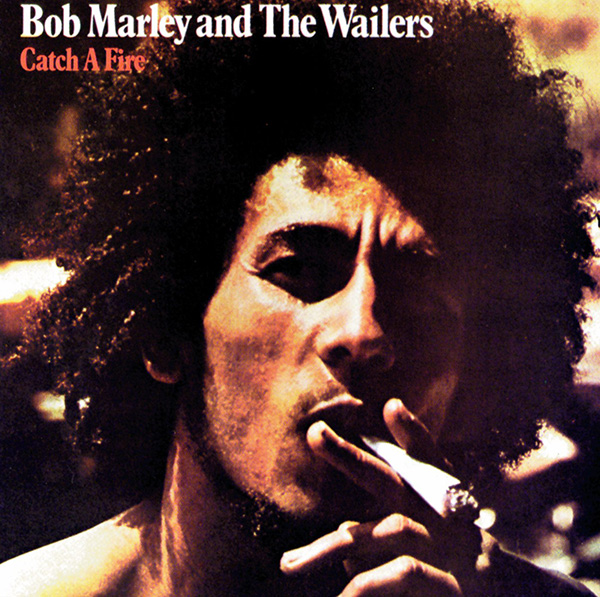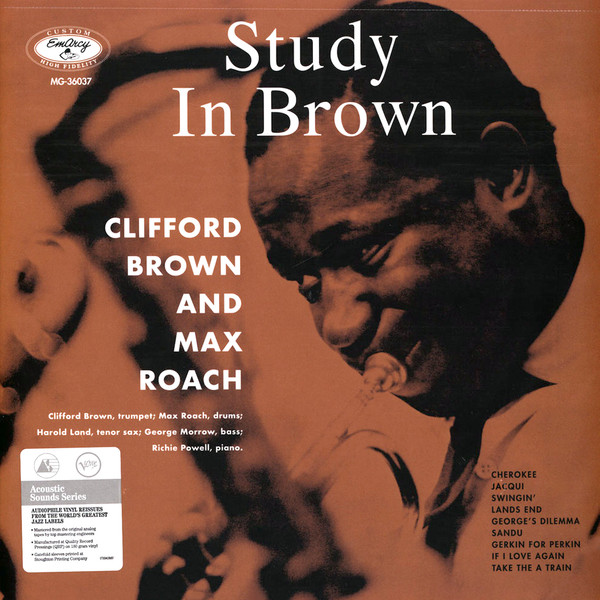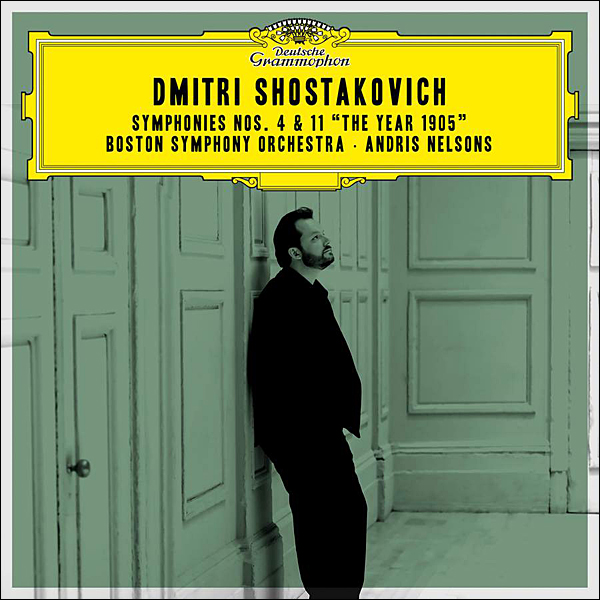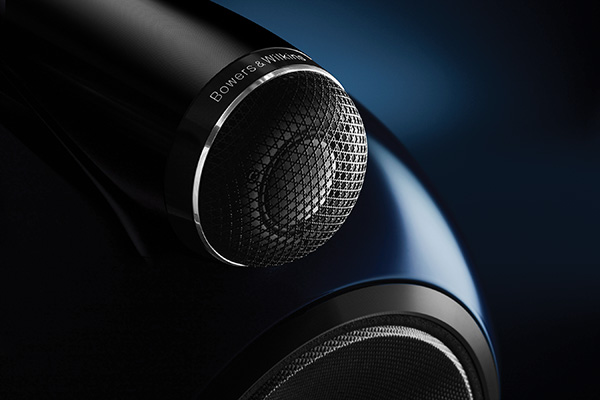| Columns Retired Columns & Blogs |
Figure 6 is incorrect, it shows the waterfall plot instead of the vertical response.

I put on CD8, two concertos by Joaquín Rodrigo recorded with the San Antonio Symphony in 1967. Concierto andaluz was commissioned by the Romeros' guitar quartet (the three sons plus father Celedonio). The guitars sit dead center in the stereo image, with prominent double basses to the right and first-seat violins to the left. Spread behind the front array, from left to right, are woodwinds and brass. As I heard while making the 3-to-2 channel mix of this recording, every note and its source is clearly located on the soundstage, and the four guitars are distinctly detailed. The 801 D4 Signatures produced this image large and realistic, as if my living room had morphed into San Antonio's Civic Auditorium.
I switched to CD6, World of Flamenco, a 2-LP concept album dreamed up then made real by Pepe Romero. He gathered his father and brothers and rounded up a group of singers, dancers, and percussion players to create an authentic jaleo, a Flamenco improvisational performing group. They rehearsed at the Romero home, then got in front of microphones at Bill Putnam's famous United Recording Studios in Hollywood just after Christmas, 1966.
The music was improvised on the spot, including Celedonio's poetry recitations, which accompany some selections. It was recorded in a way that puts the listener in the room, with the group spread across a wide soundstage. The original LP suffered from dynamic compression and artificial echo, added during disc mastering. For this release, I went back to the unprocessed, edited session tapes, which I believe bring the full spirit and energy of Pepe Romero's creative vision directly to the listener. In my booklet notes, I recommend headphones, but the B&W speakers did such a nice job pushing forth the sound energy and dynamics and correctly reproducing the low-frequency components of the Spanish dancing and foot-tapping that I experienced an in-the-room closeness similar to what I hear through headphones—but more realistic because of the floor-shaking low-frequency energy of dancer Raul Martin, on the left.

Another day, I streamed from Qobuz the 50th anniversary deluxe reissue of Catch a Fire by Bob Marley & The Wailers (24/96 FLAC, UMG/Qobuz; footnote 7). The first cut, "Concrete Jungle," a reggae classic, features clean, deep bass, recorded so that you can hear both the low-frequency energy and the tone of the electric bass. On the second track, "Slave Driver," the bass is more low-fi: fuzzy and muddy. The 801 D4 Signatures reproduced each as it is, neither flattering nor distorting poor recordings. What is there is what you will hear.
My musical tastes lean toward rock, pop, and jazz from the 1950s through 1980s. Consistent with those tastes—especially with rock and pop—I am realistic in my sonic expectations with my favorite albums. As I zipped around Qobuz and my NAS-streaming library, I wasn't surprised when new sonic flaws were uncovered in my favorite songs. What did surprise me was the emergence of new details, mainly due to the pinpoint-steady placement of instruments and voices, and the height, width, and depth of the soundstage. There was a lot of space in which the music lived, so each sound had room to be heard. This dovetails with Jim Austin's comment in his report from Carlsbad, that the 801 D4 Signatures throw a big, rectilinear soundstage. With classical music, the precision top end aided in fully presenting reverb tails and a strong sense of the recording venue.
Vinyl on the big stage
I wondered if the large, high-resolution soundstage would be friend or enemy to vinyl playback. Let's be honest: However much you enjoy your favorite LPs, you typically have to forgive a bunch of background (and sometimes foreground) noise. My tolerance is limited. I rarely spin beat-up records, and I have little interest in older records full of background hum pressed on plastic that should have been used for something else. I keep my records clean and make sure the platter and stylus are dust-free before a side gets spun. Even then, vinyl is vinyl; it's never noise-free. Applying a large-scale magnifier of details could be fraught.
As it turned out, well-made records sound great and poorly made records sound poor, writ large. But first, the 801 D4 Signatures helped me find a cable problem.

I started out with a new reissue of a mono record: Clifford Brown and Max Roach's Study in Brown (Verve/Analogue Productions B0032412-01). Dammit, the image was focused and well-sorted but leaned left. I tried adjusting the balance control on my Pro-Ject phono preamp, but even with it turned fully to the right, the image remained left of center. After a few minutes of diagnostics, I localized the trouble to the RCA cable between the turntable and preamp. With another cable swapped in, the image returned to center, with the balance control out of the circuit.
Back to the vinyl. Study in Brown is a great example of a mono mix that fits all the sounds, in pleasing balance, in the center of the soundstage. The first cut on side B, "George's Dilemma," features a strong beat by Max Roach and bassline by George Morrow, with Richie Powell's piano sitting behind Clifford Brown's trumpet, and Harold Land's tenor sax playing the melody. Then there's a round robin of solos, including Roach's distinctive work on the cymbals and hi-hat, and a solid Murrow solo low down. All this was rendered fully human-sized by the B&Ws.
Next, I spun a relatively beat-up copy of the first stereo LP to be certified RIAA Gold, Persuasive Percussion by Terry Snyder and the All Stars (Command RS 800 SD). In this case, the clicks, ticks, pops, and whoosh of the overused vinyl detracted from enjoyment of the music, but the highly directional stereo pushed it wide and high, and each close-miked instrument sounded as it should. I had visions of the 1958 audiophile, "Wow, the bongos are over there, and the Chinese bells are over there, and now they switched places!" It seems gimmicky today, but it was a big part of selling stereo sound to the early adopters (footnote 8). I concluded that it's possible to enjoy a few songs on a beat-up record through highly revealing speakers, but I'd rather stick with better platters.
My final vinyl spins were newer-production premium products, and rockers. First was the recent all-analog reissue of The Cars' eponymous first album (Rhino High Fidelity RHF 135). My copy is a superb pressing, with an almost silent background and gobs of punch and drive. The highly produced record features a somewhat boomy beat and a lot of splash and tinkle up high. Although I've heard this album many times over the years, I noticed for the first time that Ric Ocasek sometimes sings a bit distant from the microphone, with the sound of the vocal booth space around his voice, and is lower in the mix than the chorus vocals. Perhaps some first-album stage fright? The album is also more dynamic than recent digital versions, to the benefit of drums and staccato guitar and keyboard parts.

Mobile Fidelity's 2-LP version of Elvis Costello and the Attractions' Get Happy transforms what had been a 20-song, long-sided, relatively low-fi Columbia LP into four sides of 45rpm hi-fi, new-wave energy. On this, their fourth album, the band took a turn toward tightly played, simple arrangements inspired by American 1960s R&B. "Opportunity" is a good example: a steady kickdrum beat dead center, electric organ on the right, guitar (the sound leaning clean and dark) on the left, bass between drums and guitar, vocals in the center. Nick Lowe's production is unadorned—very different from, for instance, what he did with the Pretenders' "Stop Your Sobbing," and some earlier Costello material like "Party Girl." The effect is bracing. MoFi did a nice job with this, and the HD streaming version also sounds great.
One more bass check
I've adopted some references for low-frequency sound reproduction favored by fellow Stereophile reviewers. Jason Victor Serinus has recently been using the second movement of Shostakovich's Symphony No.11, "The Year 1905," performed by Andris Nelsons and the Boston Symphony Orchestra (24/96 FLAC, DG/Qobuz). John Atkinson has been using Taylor Swift's "All Too Well" from Red (Taylor's Version) (Big Machine Records, 24/96 Qobuz stream). These very different pieces of music sound equally immediate and powerful through the B&W 801 D4 Signatures.

The second movement of Shostakovich's symphony depicts Czar Nicholas II's Cossacks massacring unarmed civilians carrying a petition demanding reforms, which actually happened in front of the Winter Palace in St. Petersburg on "Bloody Sunday," January 9, 1905.9 The 18-minute movement builds slowly, the theme starting with the double basses and moving around the orchestra. At around 13 minutes, the bloodbath ensues, represented by a massive percussion burst lasting several minutes, including a big bass drum, pounded hard. The floor shakes, and I'm sure a pant leg would flutter in front of the woofers, though I never tried it. This is high musical drama despite the somewhat diffuse, distantly miked recording style.
In stark contrast, the Taylor Swift tune is highly produced, even synthetic sounding. But JA discovered a great woofer test buried in this pop tune: at 2:25, when Swift sings "'Cause there we are again in the middle of the night," the pronounced bass line drops an octave, down to subwoofer territory. A full-range speaker should cleanly reproduce the drop and sort out the busy mix. If the speakers tell the truth, Swift's voice will sound nasal and sibilant. The 804 D4 Signatures did all that.

Conclusions
I thoroughly enjoyed many hours in front of the B&W 801 D4 Signatures, and I'm grateful to the large team that helped make this review happen. These speakers bring forth a huge sound and project a large, detailed stereo image in front, above, beyond, and behind the speakers. This is what I want in full-range, room-filling speakers. They put out a lot of high-frequency energy, so focus on toe-in and seating height during setup to achieve the treble levels you prefer.
I recommend that potential buyers audition them with familiar music and spend enough time to get a grip on how accurate and fast they are. It may be somewhat shocking in comparison to older or smaller-format speakers. They are, after all, used as studio monitors, including at Abbey Road. Yet, they buck the stereotype of cold, pointillist magnifiers of all things wrong in a recording. Instead, they present every bit of information captured by the microphones and baked into the mix, all of a piece and with a rich, full sound. They make old favorites new again by revealing previously unheard details.
The Bowers & Wilkins 801 D4 Signatures cost a pretty penny, but in the context of how accurately and completely they reproduce all kinds of music, and the huge soundstage they throw, they are competitive with speakers costing much more. If you like your sound big, full-range, and highly detailed, leaving out nothing that's in the recording, you should definitely audition these speakers.
Footnote 8: Visit any audio show, and you'll learn that ping-pong stereo is still popular in certain circles.—Jim Austin
Footnote 9: See tinyurl.com/2z5kfwpe.

JA: "The minimum EPDR values are 1.24ohms at 72Hz, 2.3ohms at 362Hz, 1.62ohms at 912Hz, and 1.82ohms at 10.6kHz. The 801 D4 Signature has one of the most current-hungry impedances I have encountered"
This to me says just as hard or even harder load than Wilson Alexia's, and the amps/ that were used (especially the Class-D) for this review I feel didn't do the speakers justice that they rightfully deserve.
Cheers George

... for driving such a low impedance load include the ($3,400) Rotel RA-1592 MKII and the ($5,800) Rotel Michi X3 Series 2. Either amp can generate a peak output power of over 1.7kW into a 1ohm load.
https://www.hifinews.com/content/rotel-ra-1592mkii-integrated-amplifier-lab-report
https://www.hifinews.com/content/rotel-michi-x3-series-2-integrated-amplifier-lab-report
In case a professional Stereophile reviewer needs something with a higher level of audiophile credibility, there's the ($12,500) Hegel H600, which is capable of a peak output power of 2.3kW into a 1ohm load.
https://www.hifinews.com/content/hegel-h600-network-attached-amp-lab-report
If that's still too inexpensive, then there is the ($65,000) D'Agostino MxV Integrated, which is capable of a peak output power of about 1.6kW into a 1ohm load.
https://www.hifinews.com/content/dagostino-mxv-integrated-integrated-amplifier-lab-report

It's more current that's needed than wattage, because they are 90db efficient, so even a 100w into 8ohm amp will do, so long as it can "almost" double down it's wattage to 4ohm, and "almost" double again down to 2ohm. These sort of amps are linear big & heavy, and usually bi-polar output stage, like Agostino, Gryphon, Halo, Krell etc etc.
Cheers George

... nearly 1ohm. A "100W into 8ohm" amp that can "double down" into such a load would need to be capable of about 800W into 1ohm. How many amps can do that?
The Benchmark amp used for the test could only manage 230W into 1ohm:
https://cdn.shopify.com/s/files/1/0321/7609/files/HFN_Mar_Benchmark_AHB2_Reprint.pdf
As noted above, the less expensive of the two Rotel amps could output over 1.7kW into 1ohm, and it weighs less than 40lbs. The more powerful Hegel amp weighs lesss than 50lbs.

JAs measurements confirming tipped up treble. The ripeness / warmth of a Gryphon might make that less noticeable.

As a NON audiophile friend once said when we talked about my set, he was curious about the (financial) damage: "for that money I can go to a lot of live concerts, then I really hear the music live and I am really present. How real can you have it?".
He also said "I can't hear your speakers", the biggest compliment a audiophile can get.
If you already have a Bugatti, you can definitely consider these speakers. Yes, yes, I know, these speakers are mainly intended to show, um... hear what they are capable of (in order to sell cheaper models better, yes, I know) but then I want to read about a direct comparison with for example the Focal Utopia or price-wise comparable Wilson Audio. Now I don't know anything yet (about something I'm not even considering).

... assuming that you have a good seat and the sound system, if it's a non-acoustic performance, is of high quality.
But, what if you can't get to any of the venues at which the artist you want to hear is performing, or the dates are inconvenient? Or, suppose that you would rather hear the artist from when they were in their 20s-30s, rather than in their 60s-70s? Or, what if they're dead?
Then, you need a sound system of whatever level of performance (and affordability) will provide you with a satisfying reproduction of the artist's work.

B&W speakers will never have good off-axis response until they dump the FST midrange driver. This "technology" created far more problems than it supposedly solved. I have owned many B&W speakers over my years as an audiophile (I still own 802D2 in use with our TV), but I would never consider them now. The non-flat frequency response of the current designs do not lend themselves to long-term listener satisfaction. They may be impressive in a short-term audition but they don't resemble anything that would equate with neutral sounding.

It's interesting that you've deduced something from chart traces that oh, a thousand-odd people in B&W's chain of professional custody apparently haven't reported from real use.

Actually, the complaints about the off-axis midrange response date back to the Nautilus series, the first to use the FST driver.

I see three points: A fairly high crossover point, realistic overall sound quality, and the behavior of a 6.5" driver.
You asserted that this speaker was incapable of sounding good. I said that given its pedigree and the sheer number of experts involved with it for so long, it would be quite a trick to conceal that from everyone but a reader interpreting the charts at the end of a review.
Now the issue is the speaker's midrange behavior above 3-4kHz? I still don't see that correlating with practical listener feedback. If people need to address an eight-wide media room with absolute linearity maybe they could use something else and just give up on the center listener and stereo too.

Mr. Fine attributes Taylor Swift's Red (Taylor's Version) to Big Machine Records. The whole purpose of her re-recording all of the albums on that label is to circumvent ownership of the original masters, which happened without her consent. Taylor's Version releases are the anecdote to and antithesis of those originally released on BM Records.

Why don't you show the impulse response? You show step response, and on the old Dunlavy review both step and impulse measurements were shown.